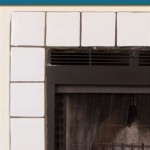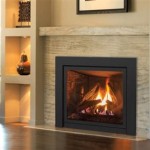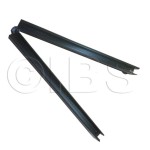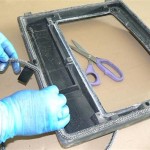How To Clean Your Fireplace Chimney Yourself
Maintaining a safe and efficient fireplace requires regular chimney cleaning. Creosote, a byproduct of burning wood, accumulates in the chimney over time. This buildup is highly flammable and poses a significant fire hazard. Cleaning the chimney yourself can save money on professional services, but it requires careful planning, the right tools, and a thorough understanding of the process.
Before undertaking this task, it's crucial to assess your capabilities and the condition of your chimney. If there are any signs of structural damage, such as cracks or missing bricks, it's best to consult with a professional chimney sweep. Likewise, if the creosote buildup is excessive or hardened, professional cleaning may be necessary. This article provides a detailed guide on how to clean a fireplace chimney yourself under normal circumstances.
Key Point 1: Preparation and Safety Measures
Safety is paramount when cleaning a chimney. Before starting, ensure the fireplace is completely cool. Embers can remain hot for several hours after the last fire. Gather the necessary tools and safety equipment. This includes a chimney brush (the correct size and shape for your chimney flue), a drop cloth or plastic sheeting, duct tape, a flashlight, a respirator or dust mask, safety goggles, and work gloves.
The chimney brush is the most important tool. It should be the correct size and shape for your chimney flue. Flue shapes are typically round, square, or rectangular. Measure the flue dimensions to ensure the brush provides complete coverage. Chimney brushes come in various materials, including wire and poly. Wire brushes are suitable for masonry chimneys, while poly brushes are better for metal flues to avoid scratching them.
Protect the surrounding area from dust and debris. Close off the fireplace opening with a drop cloth or plastic sheeting secured with duct tape. This prevents soot and creosote from spreading into the room. Create a small slit in the plastic sheeting to insert the chimney brush handle.
Protect yourself from inhaling harmful particles. Wear a respirator or dust mask and safety goggles. The dust and creosote released during cleaning can irritate the lungs and eyes. Work gloves will protect your hands from dirt and rough surfaces.
Consider the weather conditions. Cleaning a chimney from the roof is best done on a dry, calm day. Avoid windy or rainy weather, as it can make the work more dangerous and less effective. If you are uncomfortable working on a roof, consider hiring a professional or using a chimney cleaning system that allows you to clean from inside the fireplace.
Key Point 2: The Cleaning Process
There are two primary methods for cleaning a chimney: from the top down (from the roof) or from the bottom up (from inside the fireplace). The top-down method generally provides better results, as gravity assists in removing the creosote. However, the bottom-up method is safer for those uncomfortable working on a roof.
Top-Down Method: Access the roof safely using a ladder and appropriate safety equipment, such as a safety harness. Once on the roof, locate the chimney flue. Remove the chimney cap, if present. Attach the chimney brush to a flexible chimney rod. Insert the brush into the flue and push it down, adding additional rods as needed to reach the entire length of the chimney.
Use an up-and-down scrubbing motion to dislodge creosote from the chimney walls. Overlap each section to ensure complete coverage. Periodically remove the brush and inspect it for excessive buildup. Once the entire chimney has been cleaned, remove the brush and rods. Replace the chimney cap.
Bottom-Up Method: From inside the fireplace, insert the chimney brush into the flue through the damper opening. This requires a more flexible brush and rod system. Push the brush upwards, adding rods as needed. The process is similar to the top-down method, using an up-and-down scrubbing motion. However, it's more challenging to maintain consistent pressure and ensure complete coverage.
Regardless of the method used, pay close attention to the smoke shelf, located just above the damper. This area tends to accumulate a significant amount of creosote. Use a small brush or scraper to remove the buildup. Be careful not to damage the smoke shelf.
After cleaning the chimney, inspect the firebox for any debris. Use a brush and shovel to remove ash and soot. Dispose of the debris in a metal container with a tight-fitting lid. Dampen the ashes with water before disposal to prevent them from becoming airborne.
Key Point 3: Post-Cleaning Inspection and Maintenance
After cleaning the chimney, conduct a thorough inspection to ensure the job was done effectively and to identify any potential problems. Use a flashlight to examine the flue for remaining creosote or damage. Check the damper for proper operation and ensure it seals tightly when closed. Look for cracks or deterioration in the firebox lining.
Inspect the chimney cap for damage or missing components. A functioning chimney cap prevents rain, snow, and debris from entering the chimney. It also prevents animals from nesting inside. If the chimney cap is damaged, replace it promptly.
Consider scheduling a professional chimney inspection annually, even if you clean the chimney yourself. A professional can identify hidden problems, such as structural damage or blockages, that may not be apparent to the untrained eye. Regular inspections can help prevent costly repairs and ensure the safe operation of your fireplace.
To minimize creosote buildup, burn seasoned firewood. Seasoned wood has a lower moisture content, which results in a cleaner burn. Avoid burning green wood, which produces more smoke and creosote. Also, avoid burning trash, paper, or other materials that can contribute to creosote formation.
Practice starting and maintaining a hot fire. A hot fire burns more efficiently and reduces creosote production. Avoid smoldering fires, which produce more smoke and creosote. Ensure adequate airflow to the firebox to promote efficient combustion.
Clean the fireplace regularly. Remove ash from the firebox after each use. This helps maintain efficient airflow and prevents ash from accumulating in the chimney. Small, regular maintenance can significantly reduce the need for extensive chimney cleaning.
Proper maintenance of your fireplace and chimney is essential for safety and efficiency. By following these guidelines, homeowners can safely clean their chimneys and minimize the risk of fire hazards.
Document the cleaning process. Keep records of when the chimney was cleaned and any maintenance performed. This information can be helpful when scheduling future cleanings or inspections. It also provides a history of the chimney's condition.
If you encounter any difficulties or are unsure about any aspect of the chimney cleaning process, it's always best to consult with a qualified chimney sweep. They have the expertise and equipment to safely and effectively clean and inspect your chimney.
Remember to dispose of the collected creosote and soot responsibly. It's recommended to double-bag the waste in heavy-duty plastic bags and dispose of it according to local regulations. Avoid burning the waste, as it can release harmful pollutants into the air.
Cleaning a chimney is a potentially messy task. Wear old clothes that you don't mind getting dirty. Have a vacuum cleaner with a hose attachment readily available to clean up any spills or debris. Protect furniture and carpets in the surrounding area with drop cloths.
Before climbing onto the roof, inspect the ladder for any damage or wear. Ensure the ladder is securely placed on a solid, level surface. Use a ladder stabilizer to prevent the ladder from slipping. Never climb onto a roof that is wet or slippery. Work slowly and carefully to avoid accidents.
Consider using a chimney inspection camera to visually inspect the flue before and after cleaning. These cameras are relatively inexpensive and can provide a clear view of the chimney's interior. This can help you identify areas that need extra attention and confirm that the cleaning was effective.
If you have a wood-burning stove, the cleaning process is similar to that of a fireplace chimney. However, wood-burning stoves often have baffles or other internal components that need to be removed for cleaning. Consult the stove's owner's manual for specific instructions.
Be mindful of local regulations regarding chimney cleaning and maintenance. Some jurisdictions may require professional inspections or have specific guidelines for disposing of chimney waste. Check with your local authorities to ensure compliance.
By taking the necessary precautions and following these guidelines, homeowners can safely and effectively clean their fireplace chimneys and maintain a safe and efficient heating system. Regular chimney maintenance is an important investment in the safety and well-being of your home and family.

How To Clean A Chimney Diy Family Handyman

Chimney Cleaning When To Clean A Flue Family Handyman

4 Ways To Clean Chimneys Wikihow

How To Clean A Chimney Sweep

How To Clean A Chimney Forbes Home

How To Clean A Chimney Diy Family Handyman

4 Ways To Clean Chimneys Wikihow

How To Clean A Fireplace Chimney Storables

Is Diy Chimney Cleaning A Good Idea Full Service

How To Clean A Chimney Yourself Neighbor Blog
Related Posts








